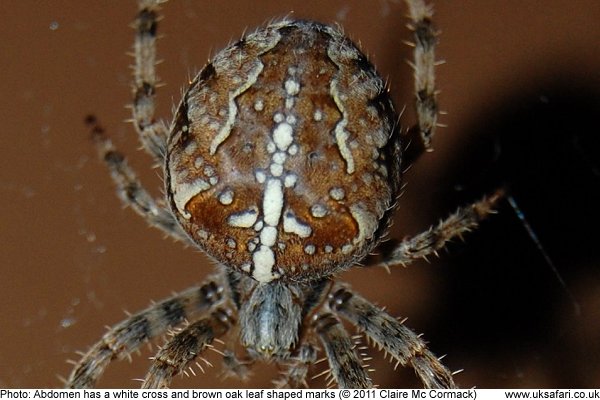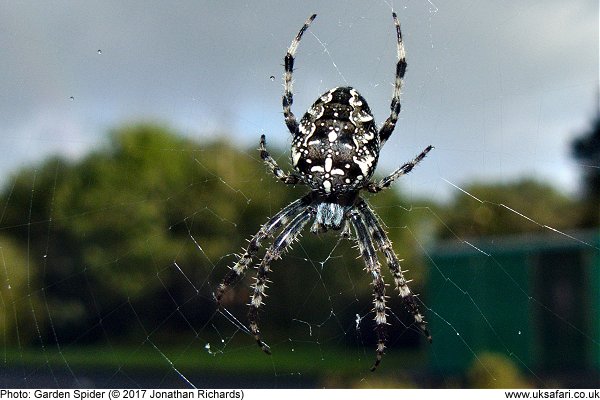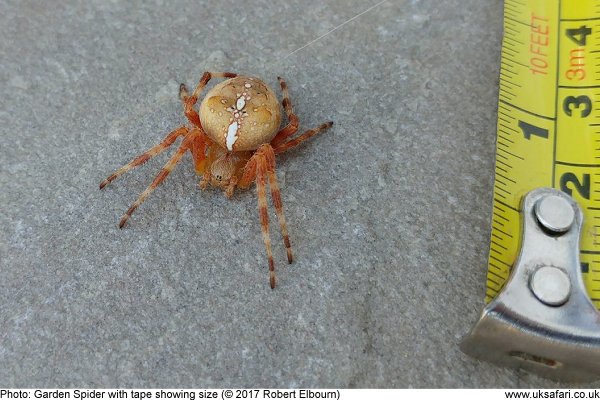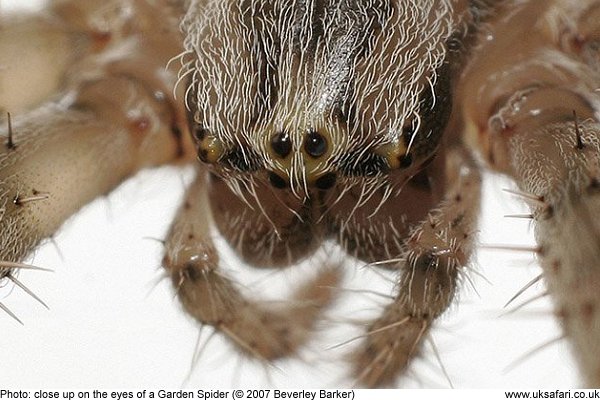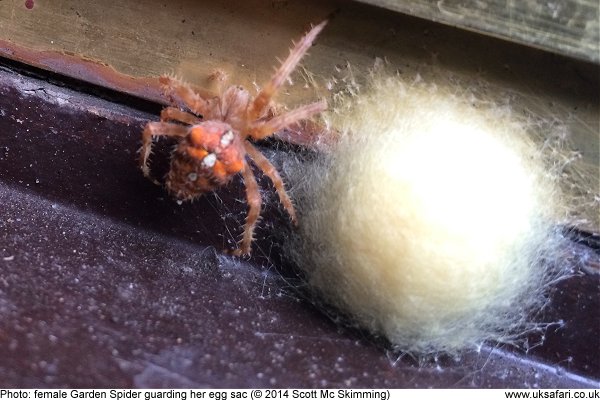 Quick Facts
Quick Facts
Scientific name: Araneus diadematus
Size: Males up to 8mm, females up to 13mm
Distribution: Rare. Found throughout the UK
Months seen: June to October
Habitat: Found in hedgerows, woodlands and gardens
Food: Small invertebrates. Mostly flying insects which are caught in orb webs
Special features: Garden spiders are sometimes called Cross spiders on account of the white '+' cross-shaped mark on the abdomen. They're most frequently seen in September and October, when they reach adult size.
The females are usually seen upside-down in the centre of their circular webs, which they construct about a metre off the ground, in trees and hedges.
The colour of the abdomen is extremely variable. It can be anything from dark grey, through brown, orange, yellow to white. Usually at least five of the dots making up the cross marking are visible to some extent.
Garden Spiders lay their egg sacs on strong branches, fences, garden sheds or other structures in late summer and early autumn. The young spiderlings, which appear in spring and early summer look very different. Their bodies are bright yellow with a dark brown triangular patch on the abdomen.
 Related Pages
Related Pages

 Popular Pages
Popular Pages
Amphibians, Bats, Badgers, Beetles, Birds, Birds of Prey, Bumble Bees, Butterflies, Caterpillars, Creepy-Crawlies, Deadly Spiders, Dolphins, Dragonflies, E-Postcards, False Widow Spiders, Free Newsletter, Frogs, Fungi, Garden Spiders, Glow-Worms, Grey Squirrels, Hedgehogs, House Spiders, Ladybirds, Mammals, Marine Mammals, Moths, Owls, Reptiles, Spiders, Toads, Trees, Wildlife Hospitals
Copyright © 2020 G. Bradley UK Safari. All rights reserved | About Us | Links | Contributors


 Garden Spiders
Garden Spiders
